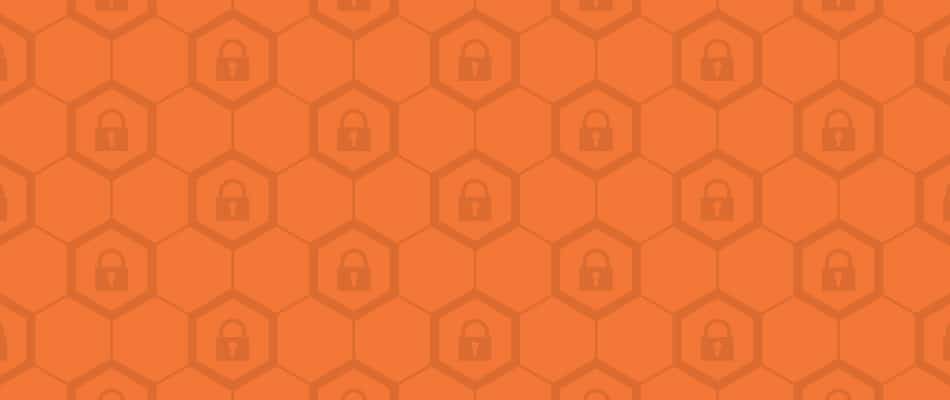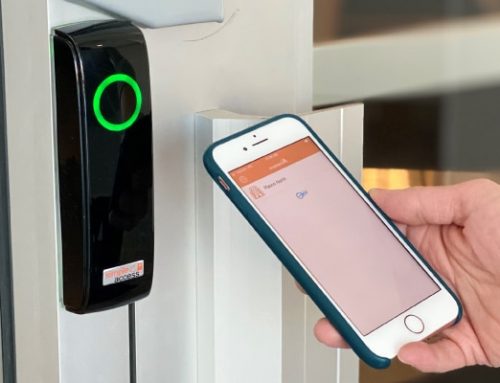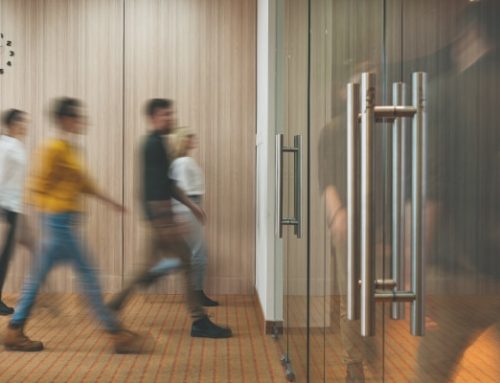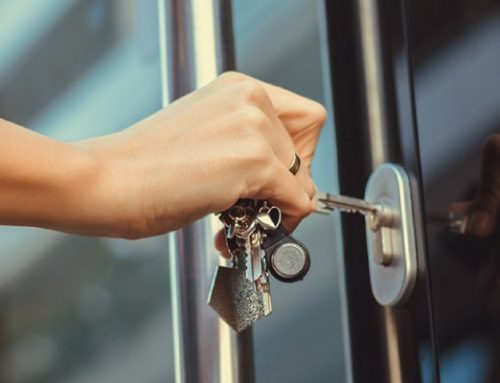Congratulations! You’ve made the savvy decision to upgrade how you secure your small- or medium-sized business (SMB) with a smart access control system.
Between the increased security risks that businesses face and employee demand for greater flexibility, this situation is a no-brainer. Traditional locks and physical keys just don’t allow for the security, simplicity and tracking that your business needs.
But not all “smart” access control systems give you the full benefits that you want. Here are seven common mistakes that SMB leaders make when making infrastructure upgrades to their physical security and building access systems.
Accounting for all entrances and secure spaces
The first step is to determine the scope of the access control solution you need. This seemingly straightforward step is where many SMB leaders can take a wrong turn on their road to upgrading their physical security system. Here are a few key questions to ask:
- How many entrances does your business have?
- Are you accounting for secondary and emergency exits?
- Do private offices, like those of your HR director or CEO, need to be locked, or will confidential material be secured in another way?
- Are there any internal spaces, like server rooms or storage spaces, that call for an additional layer of security?
The truth is that many busy SMB leaders simply don’t have time to do a careful security audit of their entire facility and business. If you don’t want to be forced to moonlight as a locksmith and a security consultant or to be influenced by the bias of the local provider’s limited offering and short-term support, here’s some good news: Providers like SimpleAccess can handle the planning and access control system installation for you, delivering deep security expertise to build a solution that fits your needs — and will be there to support your needs every step of the way.
Consulting with all relevant stakeholders for your smart access control upgrades
Everyone who enters your business will interface with your door access control system in some way, so selecting your new system shouldn’t occur in a vacuum. Exactly who you need to consult can depend on the nature of your business – but your IT and/or security teams need to be at the top of the list. Unfortunately, one study found that only 1 in 3 (37.7%) of responding organizations have their security and IT teams collaborate to establish security best practices.
If your SMB doesn’t have a security or IT team, lean on a partner like a SimpleAccess that can help develop the right solution for you. You want partners that give you the ability to connect multiple brands, devices, and systems together under one easy-to-use system that don’t require IT expertise and include ongoing support.
Bringing other stakeholders in early is also important for ironing out problems and concerns to get buy-in before you install a whole new system.
Individualized and role-based access control
Once you’ve determined your physical needs for a smart access control system, the next step is to consider who needs access, to what, and when. This is called role-based access, and it sets parameters for access around job titles. Building out role-based policies – instead of just granting access on a one-by-one, ad hoc basis – makes administration of the system faster and simpler going forward.
Individualized access can be customized to enable the flexibility that employees demand. For instance, your IT director may need access to your business on Saturday evenings to update servers during non-peak hours, while your sales manager might need access in the early morning hours for calls to other time zones. You can also update access permissions remotely and on the fly – all with a few taps and swipes on your smartphone.
Varying visitor access needs
First off, you must define who your business’s visitors are. Obvious categories include a client coming in for a meeting or a job candidate for an interview. But don’t overlook other types of visitors such as consultants, contractors, janitorial staff and maintenance workers.
Once you’ve defined who your visitors are, you must also determine what spaces they need access to – and for how long. Best-in-class solutions like SimpleAccess give your visitors and your administrator(s) the ability to manage all of these situations from the palm of your hand with an easy mobile app – reducing the time and paperwork required to get visitors in the door.
Auditing and reporting door access
Your considerations around an access control system shouldn’t stop when an employee enters your business. In the event of a breach or theft, you’d obviously go straight to your access logs to see who was in the building. Plus, a detailed and reliable real-time access log isn’t just for retroactive investigations. It can provide time and attendance verification, contract tracing and more.
Staff onboarding for access control software
How will staff be onboarded – both initially when the system is installed, and on an ongoing basis as new employees are hired? A study by HID Global found that learning a new system was one of the chief objections to implementing a new access control system. It’s also where the simplicity and security benefits can be lost in a hurry. If employees struggle to use the system, administration becomes a headache. And if their frustration bubbles over into workarounds, you could put your business at risk. Developing a comprehensive plan for training current and future staff on how to use the system will limit your administrative burden and risk going forward.
Implementation and installation of smart locks and Bluetooth access readers
Many SMB leaders select an access control system based on price point alone, only to end up bearing the much-harder-to-measure costs of an essentially DIY access control installation process and cumbersome administration.
In fact, with many access control system providers, it’s your responsibility to determine if they have the tech and hardware you need – smart locks and Bluetooth access readers – or to hire a contractor to install the new locks and card readers. Dumping that burden on you defeats one of the main purposes of switching to smart access control: You want to focus on your core business – not be a locksmith and security consultant. That’s why leading providers like SimpleAccess provide an end-to-end access control management services that minimizes your burden. We work with you to understand your needs. Then, we design and install the solution – tech and hardware – that’s right for you; and we provide ongoing support including onboarding current and future employees. That saves you time and money – and allows you to focus on the core business tasks that you excel at.
Now that you’re up to speed on the most commonly overlooked elements of selecting and installing an access control system, you’re well on your way to protecting your employees, visitors and business assets. Learn how Simple Access can design, install and manage a cost-effective smart access control system that maximizes convenience, simplicity and security.






